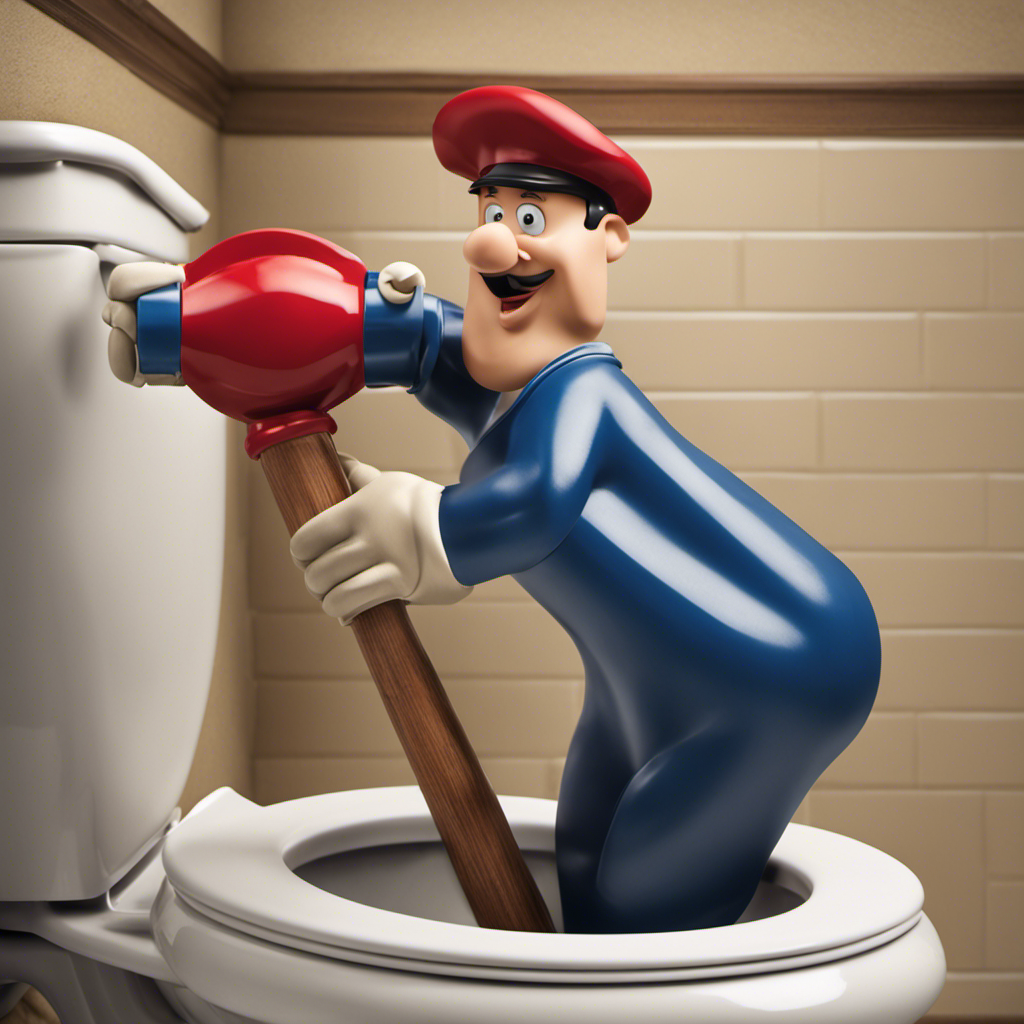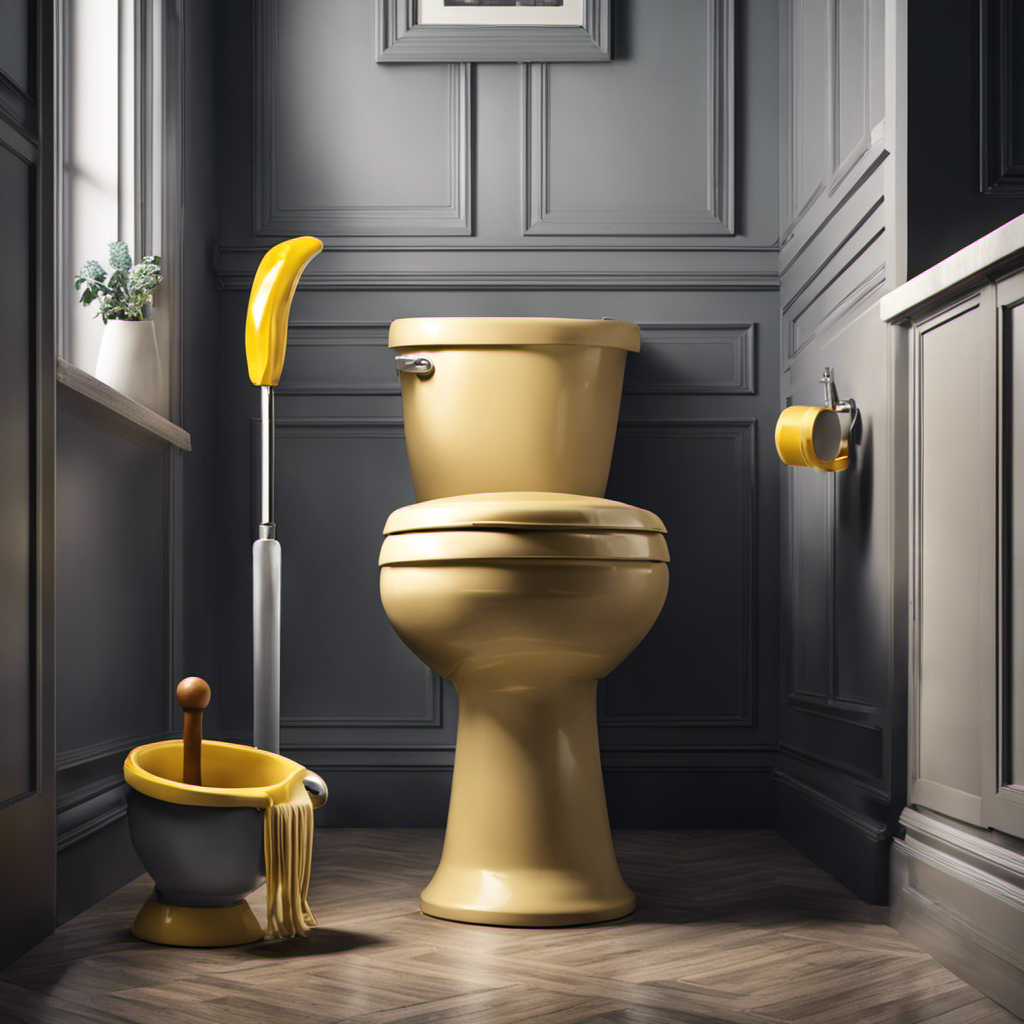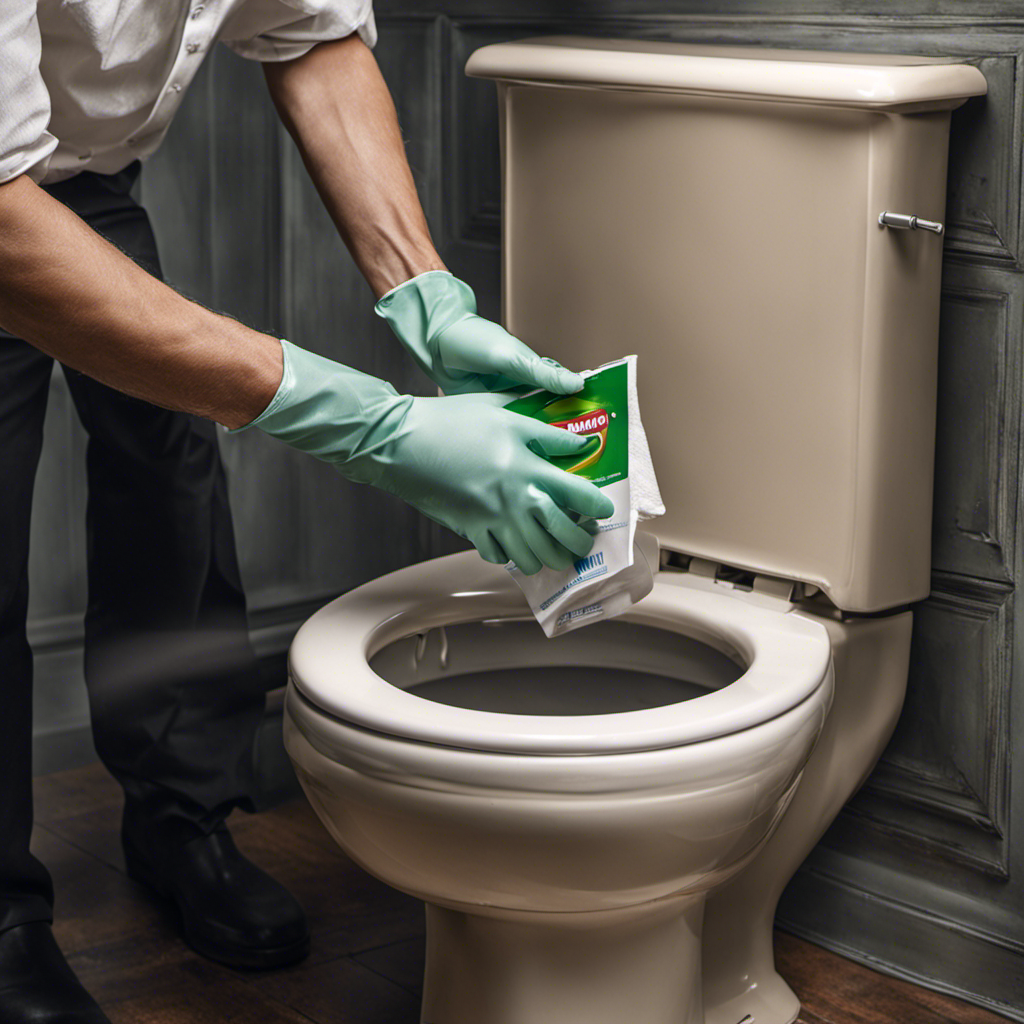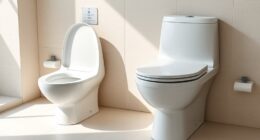I’ve got to admit, dealing with a clogged toilet is never pleasant. But fear not, my friend! I’m here to share with you a simple yet effective technique to unclog that stubborn toilet using just a plunger.
In this article, I’ll walk you through the different types of plungers, how to prepare your toilet for plunging, the proper technique to use, troubleshooting common problems, and even some tips to prevent future clogs.
So, let’s dive in and conquer this messy situation together!
Key Takeaways
- There are two types of plungers for unclogging toilets: cup plungers and flange plungers.
- It is important to choose a plunger with a sturdy handle and a good-quality rubber cup or flange.
- Proper technique involves positioning the rubber end of the plunger over the drain hole, applying downward pressure to create suction, and using quick and forceful plunges to dislodge the clog.
- If a plunger is not effective, alternative methods such as using hot water, dish soap, vinegar and baking soda, or a toilet auger can be tried.
Types of Plungers You Can Use
There are two types of plungers you can use to unclog a toilet: a cup plunger and a flange plunger.
When it comes to toilet plunger maintenance and choosing the right plunger, it’s important to know the differences between these two types.
A cup plunger has a simple design with a flat bottom and a wide, shallow cup. It is great for unclogging sinks and tubs as well.
On the other hand, a flange plunger has an additional piece of rubber on the bottom called a flange. This flange helps create a better seal around the toilet drain, making it more effective for unclogging toilets.
When selecting a plunger, make sure to choose one with a sturdy handle and a good-quality rubber cup or flange. Regularly check and clean the plunger to ensure it remains in good working condition.
Preparing the Toilet for Plunging
First, make sure you’ve positioned the rubber end of the plunger over the drain hole before applying pressure. This is an important step in preparing the toilet for plunging. It ensures that the suction created by the plunger will be focused on the clog, increasing the chances of success.
In addition to using a plunger, there are alternative methods for unclogging a toilet. Here is a table that compares these methods:
| Method | Description | Effectiveness |
|---|---|---|
| Hot Water | Pouring hot water into the toilet bowl | Moderate |
| Dish Soap | Adding dish soap and hot water | Moderate to High |
| Vinegar and Baking Soda | Mixing vinegar and baking soda and pouring it into the toilet bowl | High |
| Toilet Auger | Using a toilet auger to manually remove the clog | High |
Proper Technique for Using a Plunger
To ensure optimal suction, position the rubber end of the plunger over the drain hole before applying pressure. This allows for a tight seal and increases the effectiveness of the plunging technique.
When using a plunger, it’s important to follow the proper technique to avoid potential risks of improper plunging techniques. Here are some tips to keep in mind:
- Apply downward pressure: Push the plunger firmly down onto the drain hole to create suction.
- Use quick, forceful plunges: Move the plunger up and down rapidly to create a strong suction and dislodge the clog.
- Repeat if necessary: If the clog is stubborn, continue plunging until water starts to drain.
While using a plunger is a common and effective method, there are alternative unclogging methods available. These include using a plumbing snake or using a mixture of baking soda and vinegar.
Now, let’s move on to troubleshooting common plunger problems and how to solve them.
Troubleshooting Common Plunger Problems
If you’re having trouble with your plunger, one common issue could be a weak seal around the drain hole. This can make it difficult to create the necessary suction to unclog the toilet.
To fix this problem, make sure the plunger’s rubber cup is fully covering the drain hole. You can also try applying some petroleum jelly to the rim of the plunger to create a better seal.
If the weak seal persists, you might need to consider alternative methods for unclogging your toilet. One option is using a toilet auger, which is a long, flexible tool that can reach deeper into the drain to break up stubborn clogs.
Another alternative is using a chemical drain cleaner, but be sure to follow the instructions carefully and use a product that is safe for toilets.
Tips for Preventing Future Toilet Clogs
One effective way to prevent future toilet clogs is by regularly maintaining your plumbing system. By taking a few simple steps, you can ensure that your toilets stay clog-free and avoid the hassle of dealing with a blocked toilet.
Here are some tips for preventing future toilet clogs:
-
Proper Flushing Technique:
-
Teach everyone in your household to only flush toilet paper and human waste down the toilet.
-
Avoid flushing items like wipes, tissues, or feminine hygiene products, as they can easily cause clogs.
-
Regular Maintenance:
-
Schedule regular plumbing inspections to identify and fix any potential issues before they become major problems.
-
Consider using enzymatic cleaners or natural drain cleaners to keep your toilet pipes clear of debris.
Conclusion
In conclusion, using a plunger to unclog a toilet is a simple yet effective solution that anyone can do. It’s like having a superhero at your disposal, ready to save the day when your toilet is in distress.
With the right technique and a bit of troubleshooting, you can easily tackle even the toughest clogs. Remember to use the appropriate plunger, prepare the toilet properly, and follow the proper plunging technique.
By taking these steps and implementing preventive measures, you can keep your toilet running smoothly and avoid future clogs.
So go ahead, be the hero of your own bathroom and plunge away!










